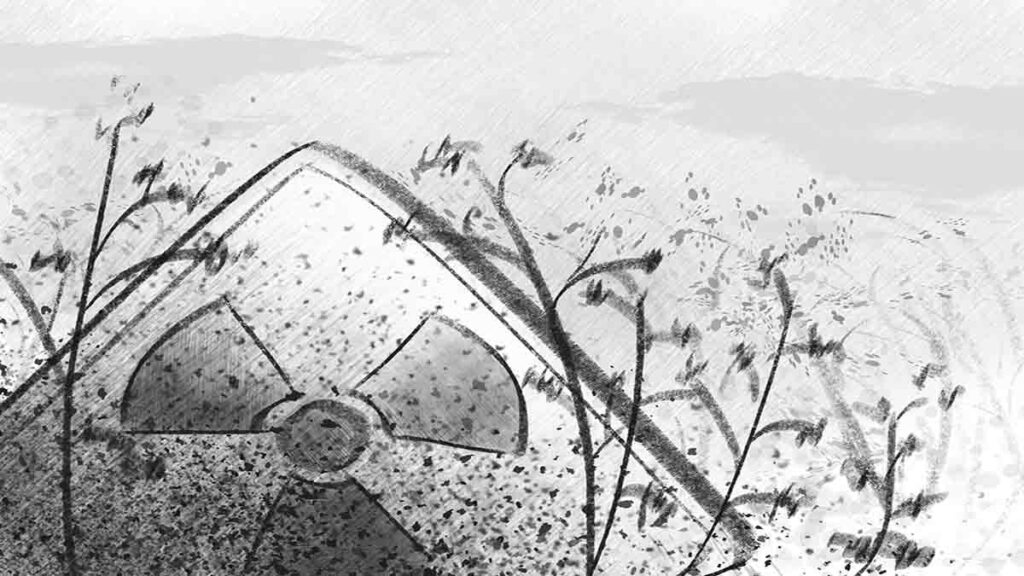
1986, once and for all, put an end to the illusions about the existence of a “peaceful” atom. The exploded fourth power unit at the Chernobyl nuclear power plant became a kind of nuclear rubicon, after which the whole history of nuclear energy with its symbolic prefix “peaceful atom” began to undergo a total examination.
Cultivating from all the stands the motto of using the atom for peaceful purposes, mankind realized what terrible force it was actually dealing with only after the Chernobyl disaster.
Then, 33 years ago, thousands of people were thrown to liquidate the consequences of the disaster that arose as a result of a chain technical reaction to an attempt to conduct a “peaceful” experiment.
You can find below the memoirs of those who, among the so-called first “volunteers,” arrived at the scene of the tragedy immediately after the disaster. What did it mean to them to be volunteers? Did they understand – where they were being taken, knew – what awaited them?
We understood that there was no way out….
“…According to official data, only radio-controlled equipment was supposed to be and work in critical proximity to the destroyed fourth power unit. It was led by people from a more or less safe distance. But in practice, this technique often broke, and then people had to go to hell. It is known who these people were: the employees of the nuclear power plant, firefighters, conscripts, as well as those who arrived from the reserve or reserve, police officers, miners. Then all of them will be called “Chernobyl partisans.”
Most often they took doctors and drivers, not to mention a highly specialized composition – mechanics, chemists, signalmen, and so on. Some doctors were taken directly to the emergency room right from the office. The agenda was brought during the reception of patients. They were given only a couple of hours to get ready.
Chernobyl partisans
There were many volunteers and enthusiasts who only after arriving at the Chernobyl nuclear power plant began to understand what they had to do. Some carried sand, crushed stone, laid concrete, were engaged in assembly and transportation to garbage burial grounds. Others dug a tunnel under the very heart of the reactor, were engaged in pumping groundwater. Volunteers built dams on the Pripyat River, and then with the most ordinary household forks, “impregnation” was loaded onto dump trucks, with which radioactive liquid was diluted.
They decontaminated the interior of the nuclear power plant with a deactivator, poured lead over the windows, removed blocks of radiation graphite scattered everywhere at the time of the explosion. People understood that there was no way out. At any cost, even at the cost of their lives, it was necessary to build a concrete sarcophagus over the remains of the exploding reactor in order to block the access of wind and rain to radiation residues as quickly as possible.
All those who worked in a particular accident elimination section were taken to work by two forms of transport. First, they were loaded into ordinary trucks and transported to Chernobyl. The so-called “clean zone” ended there. Then there was a reboot into special vehicles, upholstered with lead sheets from the inside. Everyone was given a protective suit and a respirator upon arrival.
Then there was no other workwear, so it was believed that respirators, petals, OZK suits, gloves and rubber boots were almost the “best uniforms” that you could think of so as not to catch radiation sickness.
All volunteers worked in shifts, the shift lasted ten minutes every hour. One shift was no more than 5-6 hours. This time was enough to get the maximum dose. After each shift, the washing and cleaning procedure was mandatory at the sanitary inspection room.
When a person gained the maximum dose of radiation, he was sent home. The departed volunteers were exchanged for new arrivals. And again they started the conveyor: if you scored the maximum allowable 25 x-rays, you could go home.
In the first terms, the norm was almost twice as high. But then, by order of the leadership, they began to calculate the norm of no more than 2 x-rays per day. Some who wanted to return home as soon as possible got into the heat, as they say, and gained the necessary dose of radiation not in a month, like everyone else, but in the first 5-10 days of work.
Having received the dose and the corresponding seal on the military ID card, the volunteers went home, thus changing the huge series of “Chernobyl partisans”.